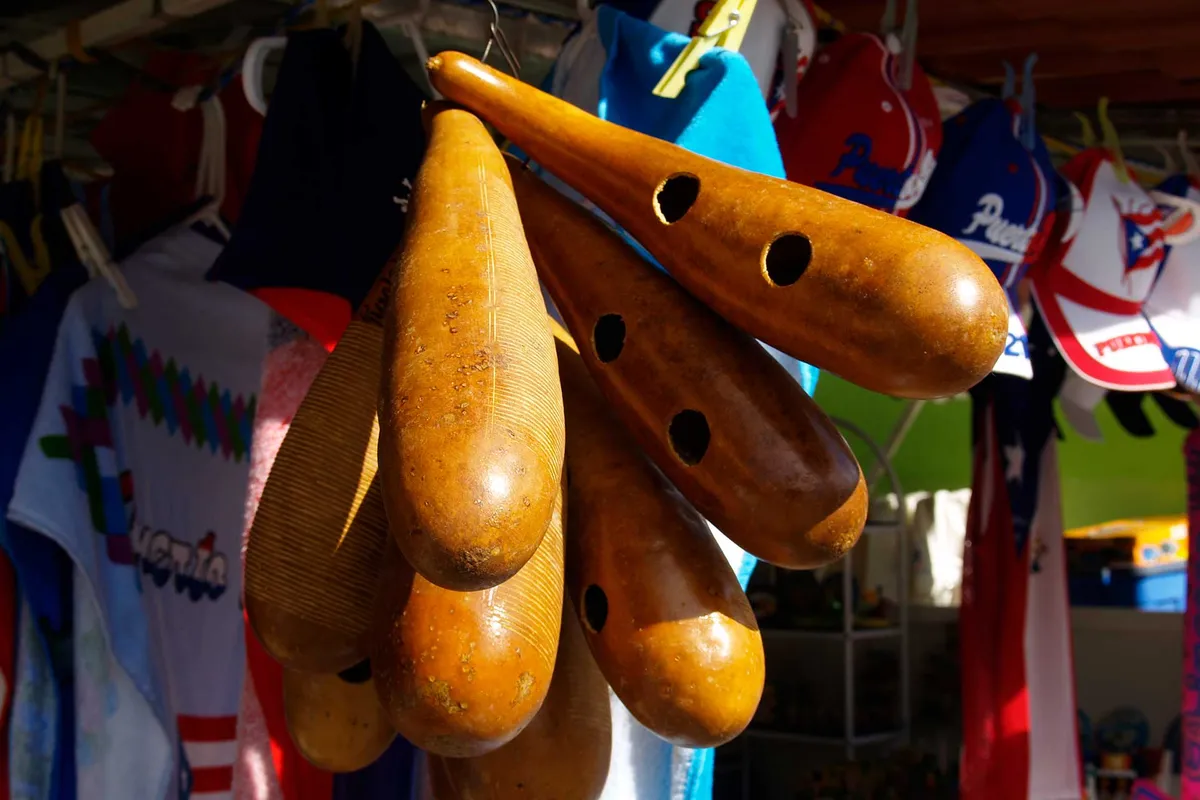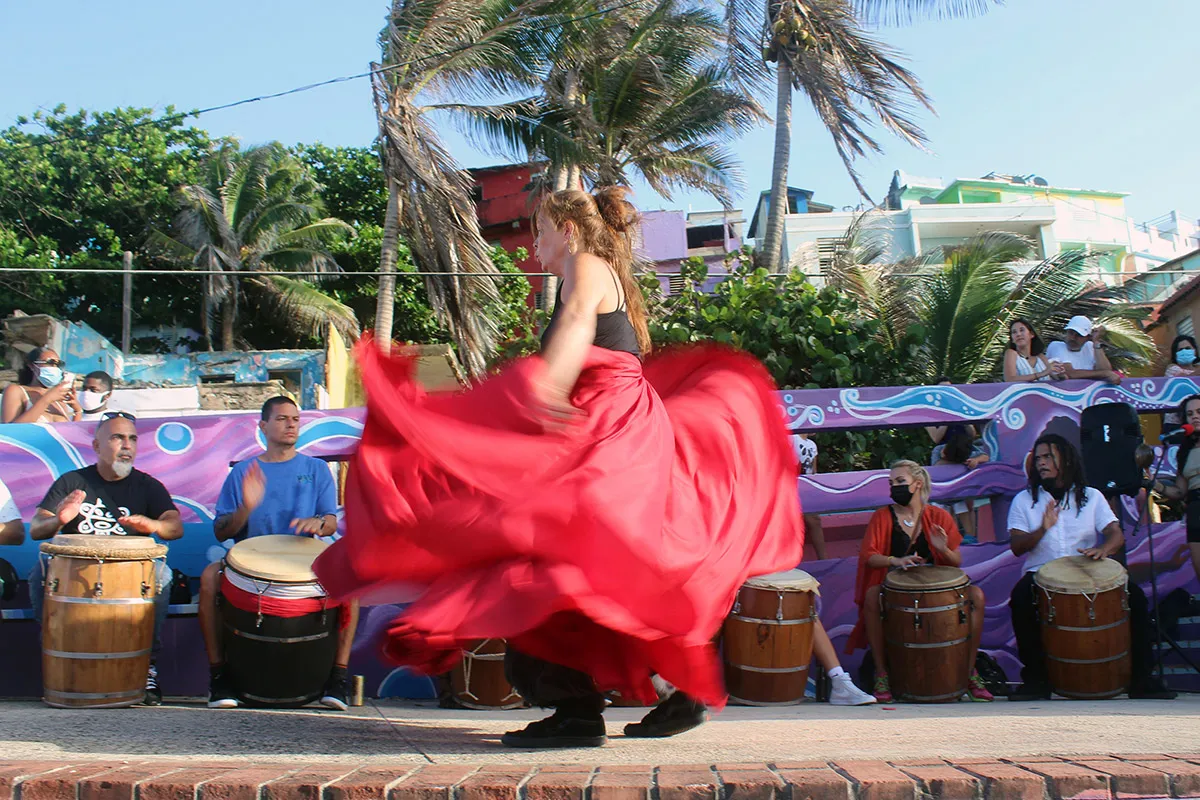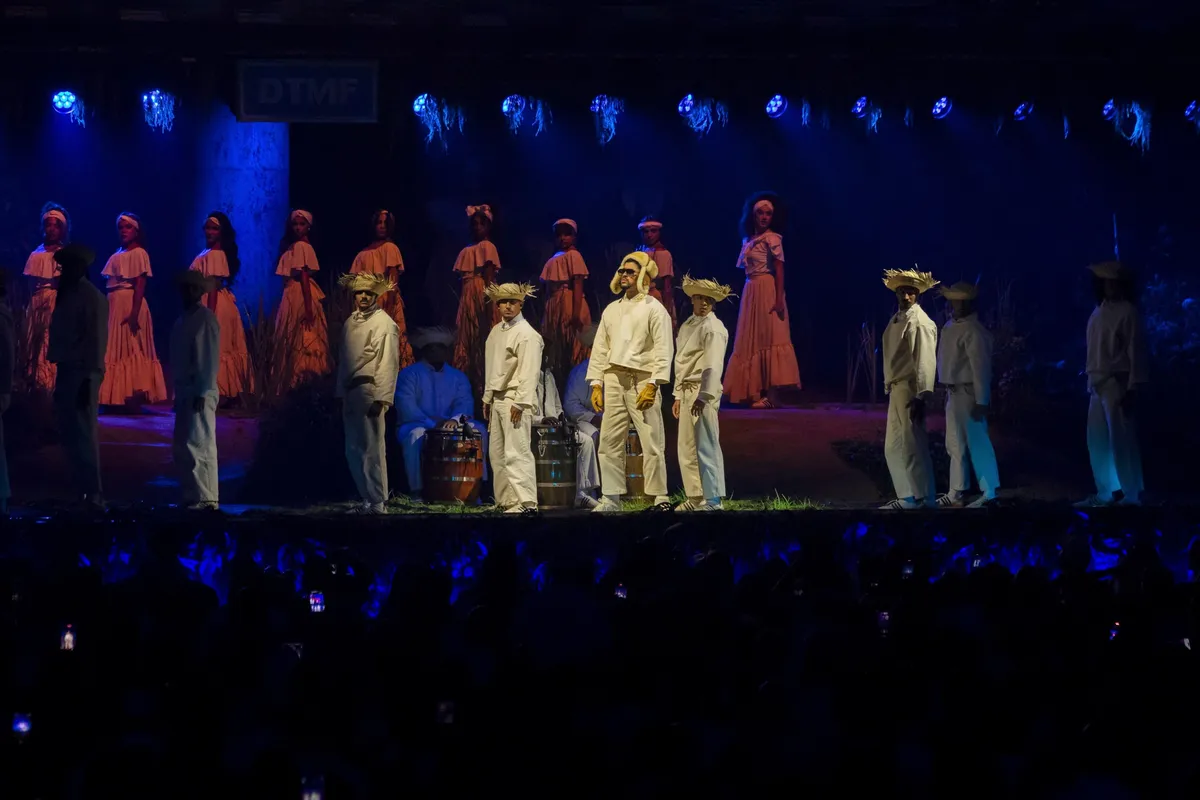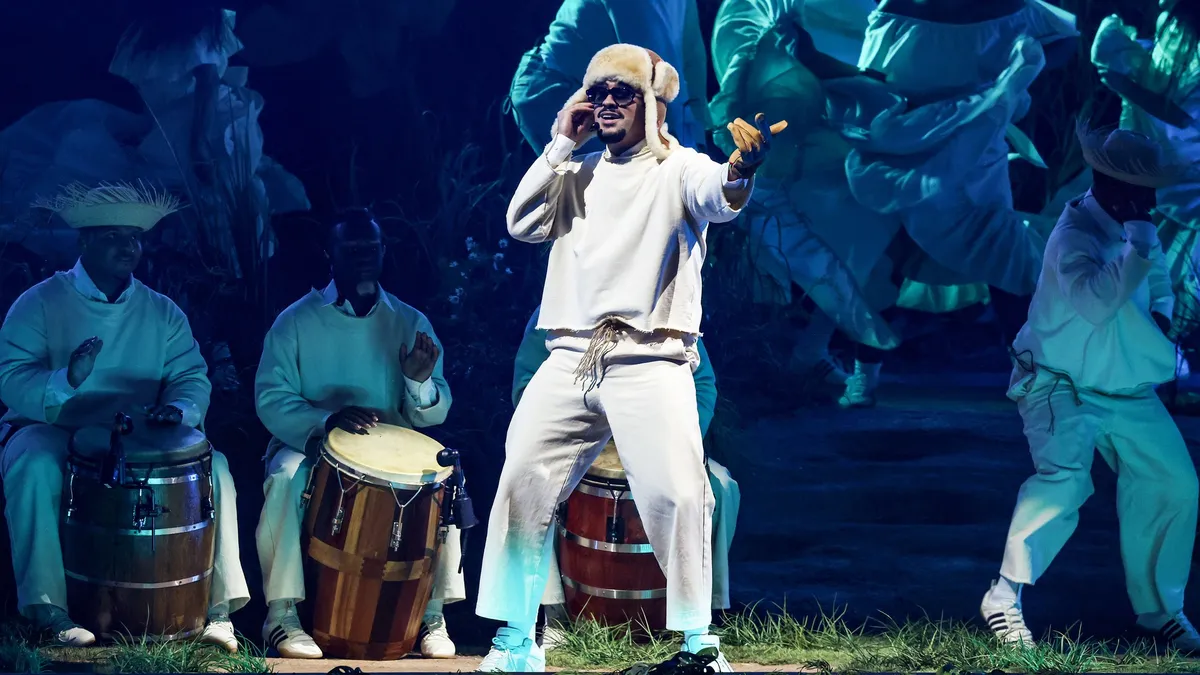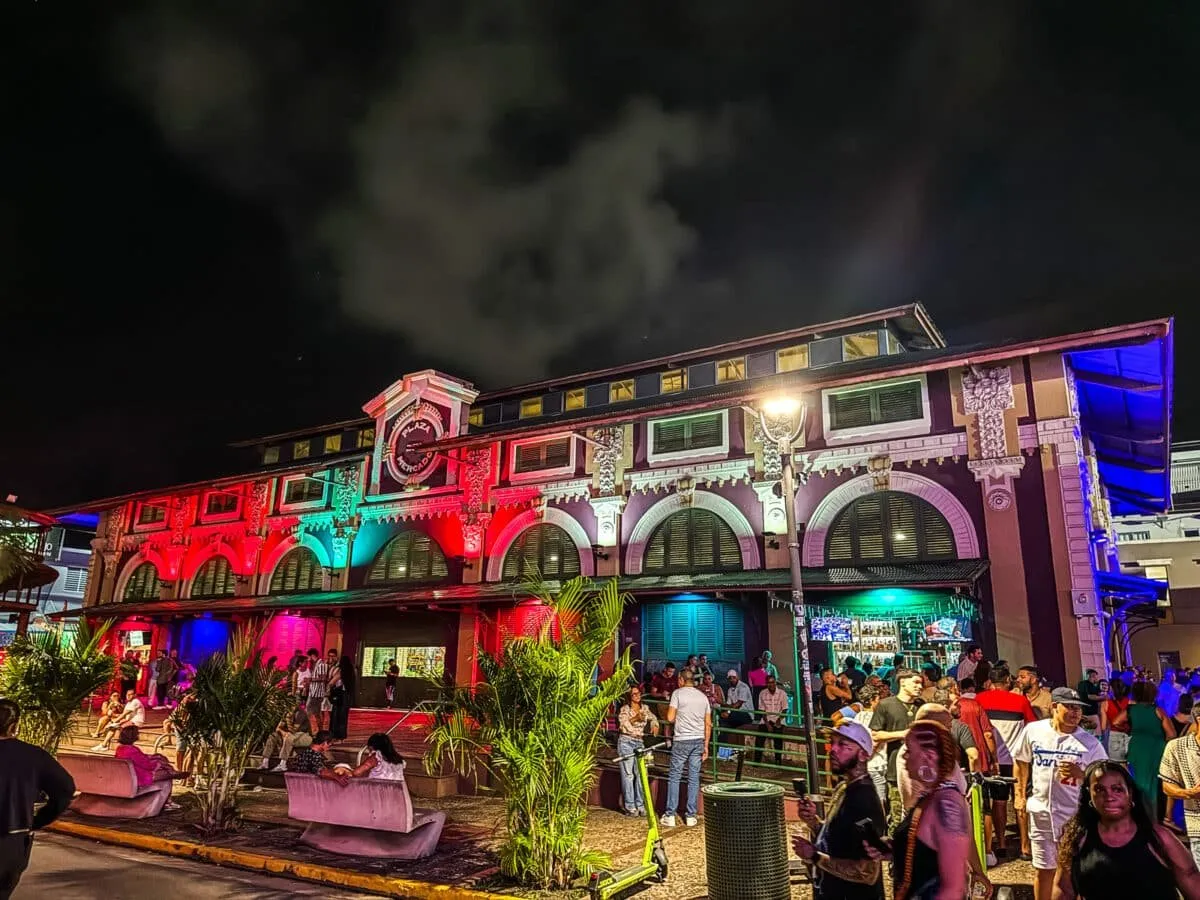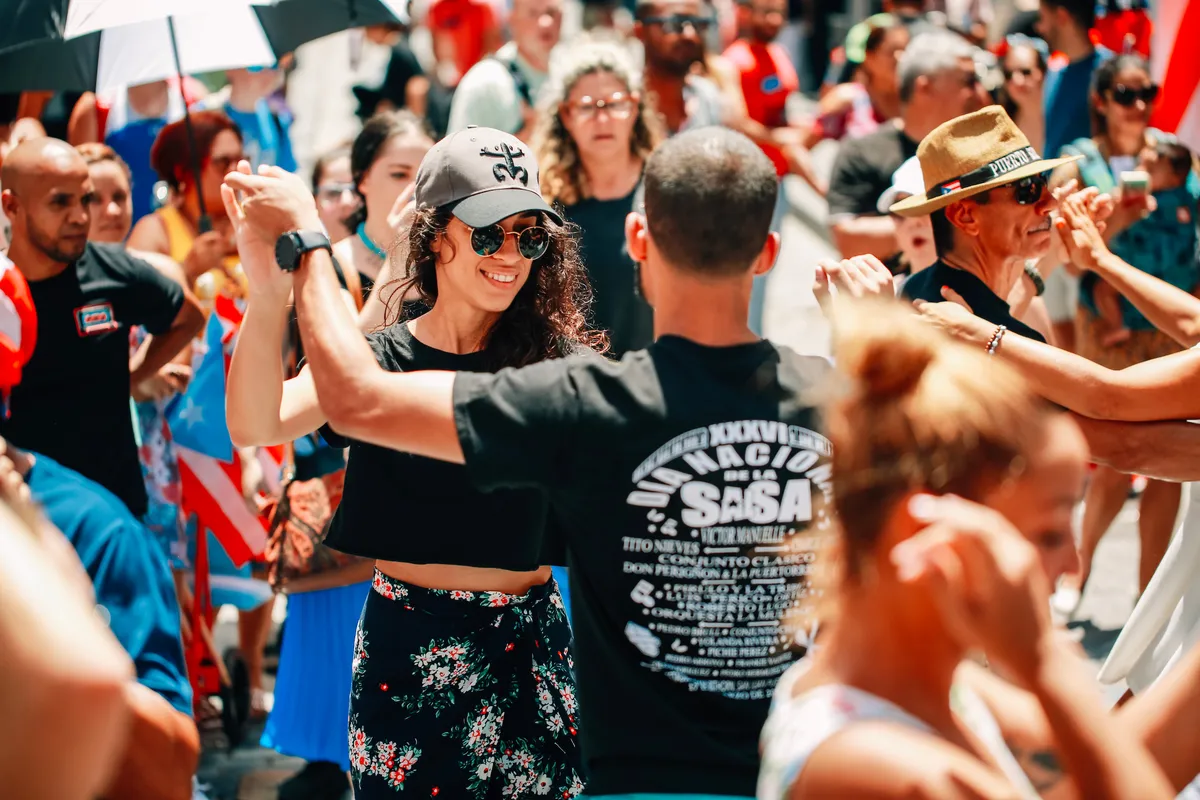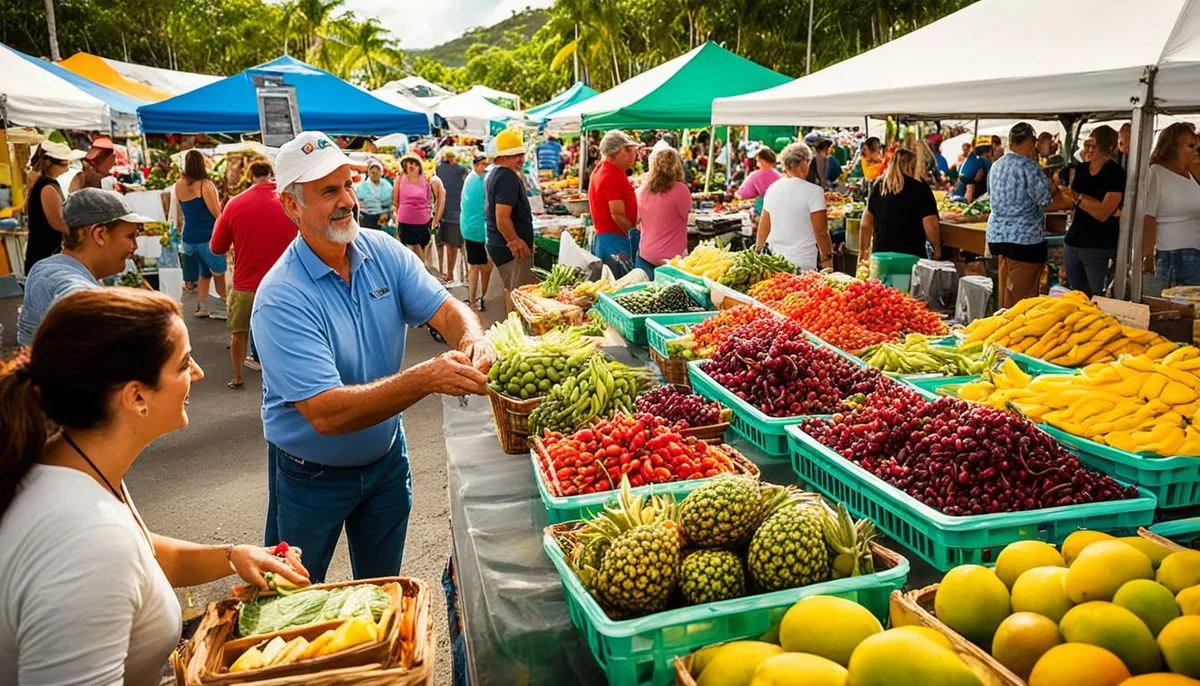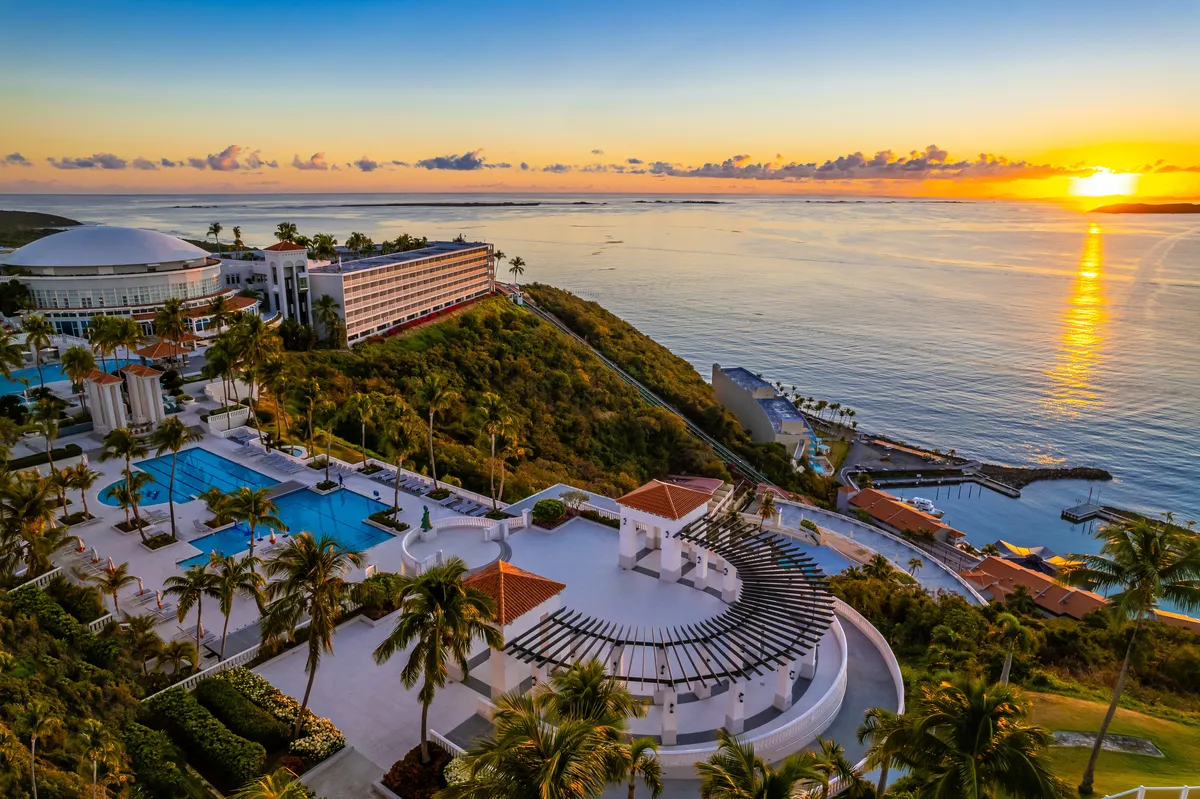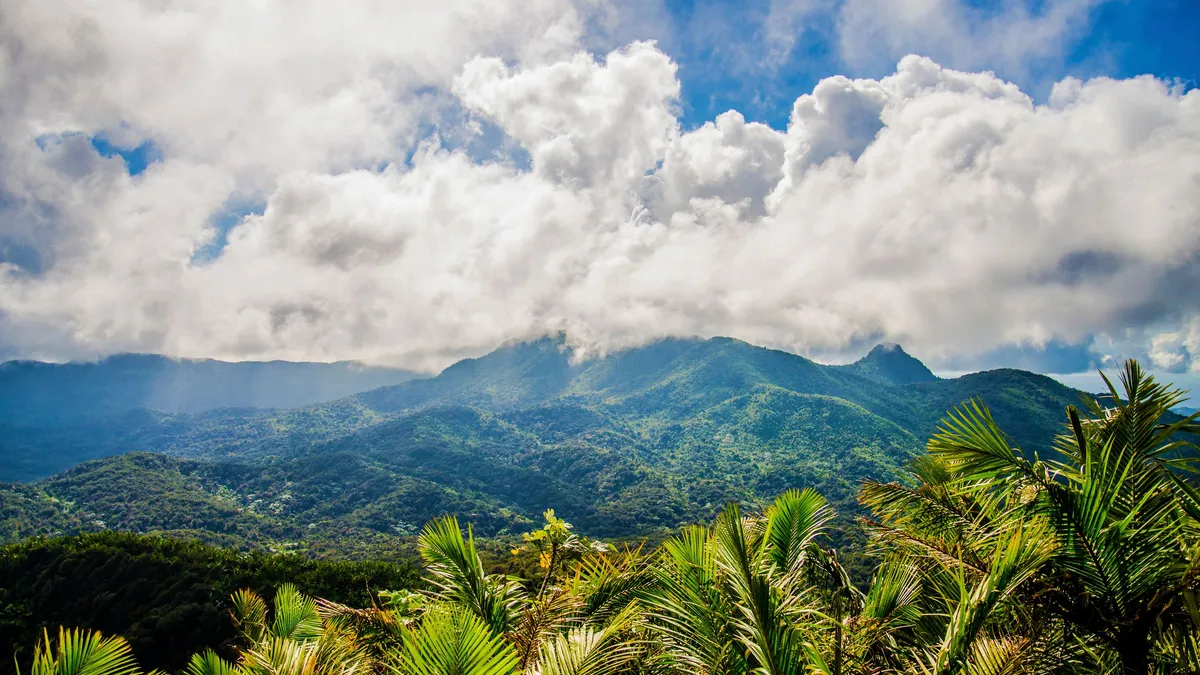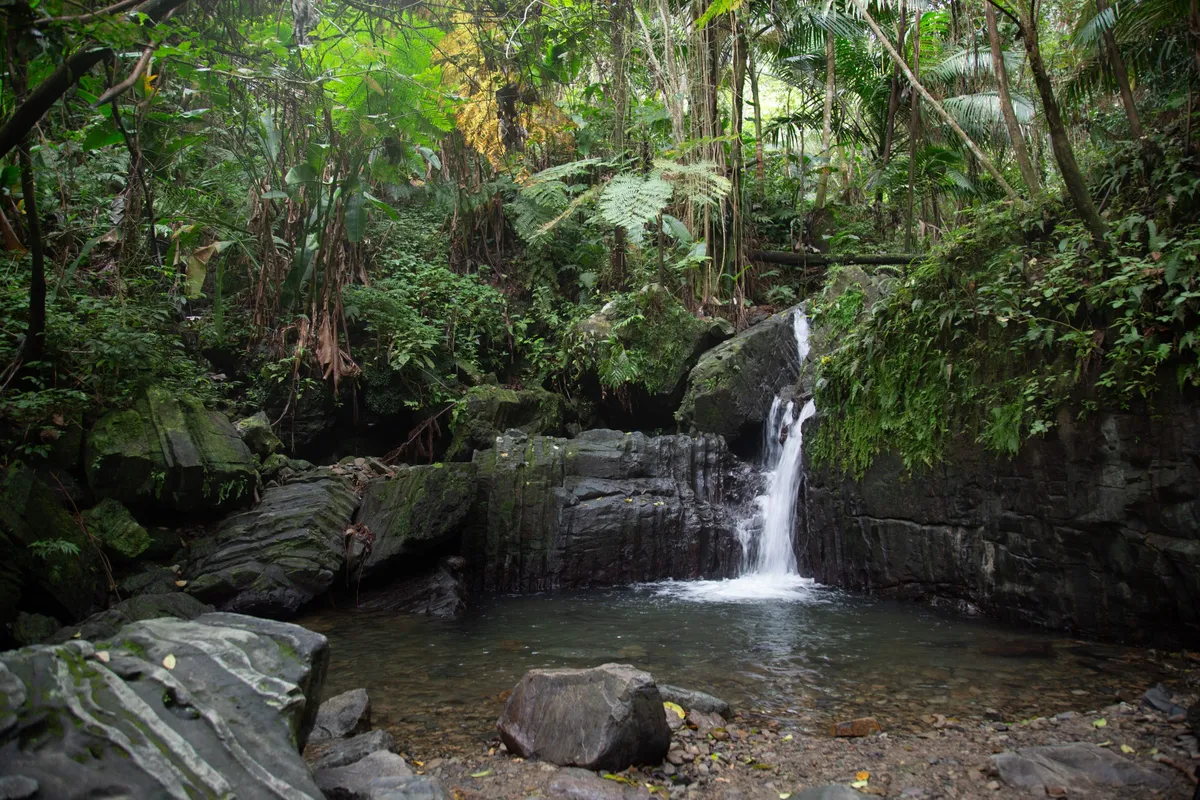If you want to truly understand Puerto Rico, you have to listen first. Stand on a cobblestone street in Old San Juan as the sun dips below the horizon, and you’ll hear it—the brassy notes of a salsa band erupting from a hidden courtyard, the deep percussive call of bomba drums echoing from a nearby plaza, the bass-heavy beat of reggaetón pulsing from a passing car. Puerto Rico music isn’t just background noise or a vacation soundtrack; it’s the island’s very pulse, its collective memory, and its most vibrant form of cultural expression. Every restaurant, bar, and roadside kiosk seems to hum with a life of its own, from the traditional melodies of the mountains to the modern hits that fill the airwaves. For the experiential traveler who wants to connect with the soul of a place, exploring the rich landscape of Puerto Rico music is the destination itself—it’s where you’ll move beyond the concert hall and feel the heartbeat of the island in a neighborhood venue, an impromptu street party, or a sunset dance class on the beach.
The Three Roots of Puerto Rico’s Musical Soul
The rich tapestry of Puerto Rico music is woven from three distinct cultural threads: the indigenous Taíno, the colonial Spanish, and the enslaved West Africans. This blend of influences created a sound that’s entirely unique, a cultural symphony where each legacy plays a vital role. Understanding these roots is your first step to appreciating the depth and complexity of the music you’ll hear across the island.
The Taíno Foundation
The Taíno heritage provides the foundational percussive texture of many folk genres. Instruments like the güicharo (or güiro)—a notched, hollowed-out gourd scraped with a stick—and maracas made from gourds filled with pebbles or dried beans connect the music to the natural world of the island. These instruments offer a persistent, organic rhythm that underpins more complex melodies and beats.
Spanish Strings and Harmony
The arrival of the Spanish in the 15th century introduced stringed instruments and the principles of European harmony and melody. The classic guitar, brought by Spanish conquistadores, was adapted and transformed by local artisans, eventually evolving into the iconic cuatro. This guitar-like instrument, with its ten strings arranged in five pairs, is now recognized as Puerto Rico’s national instrument. Its bright, resonant tone is the heart of música jíbara, the traditional folk music of the island’s mountainous interior, expressing themes of love, land, and cultural pride.
African Rhythms and Soul
The profound and enduring African influence brought the very soul of Puerto Rico music: complex, polyrhythmic percussion. West African traditions, carried to the island by enslaved people beginning in the 16th century, are the source of the powerful, driving beats that define the island’s most iconic genres. This heritage is most audible in the instruments of bomba and plena. The barriles de bomba—large drums traditionally made from rum barrels and covered with stretched goatskin—provide the deep, resonant tones for bomba. Similarly, the panderos, a set of three different-sized handheld frame drums, are essential to the rhythm of plena. It’s this powerful rhythmic foundation, born from a history of struggle and resilience, that gives Puerto Rico music its undeniable energy and emotional depth.
Bomba and Plena: The Drums of Resistance and Resilience
Often mentioned together, bomba and plena are the twin pillars of Puerto Rico’s Afro-Boricua musical heritage. Both are percussion-driven and deeply connected to the island’s history, yet they possess distinct rhythms, instruments, and cultural roles. To experience them is to connect with the island’s most profound stories of struggle, community, and celebration.
Bomba: The Soulful Dialogue
Bomba is one of the oldest native musical traditions in Puerto Rico, emerging in the 17th century from the coastal sugar plantations where enslaved West Africans and their descendants toiled. Born from a need to communicate across different languages and tribes, bomba became a powerful vehicle for political and spiritual expression. Its lyrics conveyed the anger, sadness, and defiance of an oppressed people, often serving as a catalyst for rebellions and uprisings. Yet it was also a source of joy, a way to celebrate baptisms and marriages, and a means of forging a new, shared identity in the face of unimaginable hardship.
What makes bomba truly unique is the dynamic, improvisational “dialogue” between the lead drummer, playing the high-pitched subidor or primo barrel, and the lead dancer. In a reversal of most dance forms, it’s the dancer who leads. Their movements—sharp, elegant gestures called piquetes—challenge the drummer to match their rhythm, creating a spontaneous and electric conversation between body and drum. This percussive duel is supported by the steady beat of the lower-pitched buleador drum and the scraping of the cuá, two sticks played against the side of a barrel. With over 16 distinct rhythms, each with its own tempo and attitude, bomba is a rich and complex art form that continues to evolve.
Plena: The Sung Newspaper
Developing from bomba in the early 20th century in the southern city of Ponce, plena serves a different but equally vital purpose. If bomba is the spiritual expression of the soul, plena is the narrative voice of the community. Its lyrics are stories that recount current events, comment on political movements, offer satirical critiques, and share the gossip of the neighborhood. This function earned it the beloved nickname “el periódico cantado” (the sung newspaper), as people would gather to listen to pleneros to learn the news of the day.
In contrast to bomba’s sixteen rhythms, plena is built on one basic, infectious rhythm. Its defining instrumental sound comes from a trio of different-sized handheld frame drums called panderetas: the large seguidor holds the basic rhythm, the medium segundo plays in counterpoint, and the small, high-pitched requinto improvises over the top. These are often accompanied by the Taíno-derived güiro, guitar, and the national cuatro.
The Keepers of Tradition
These traditions have been kept alive for generations by dedicated families who act as cultural guardians. The Cepeda family of Santurce, led for years by the patriarch Don Rafael Cepeda, and the Ayala family of Loíza are legendary for their mastery and preservation of bomba. In the mid-20th century, artists like Rafael Cortijo and the legendary singer Ismael Rivera brought bomba and plena to international audiences by fusing them with other genres, laying the groundwork for what would become salsa.
Historically marginalized, these genres have undergone a powerful renaissance in recent years, embraced by younger generations as a vital link to their African heritage and a symbol of cultural pride. This revival isn’t just about music—it’s a conscious act of cultural and political reaffirmation. As the island grapples with its colonial status and cultural identity, the act of playing and dancing bomba has become a modern form of resistance, a way of honoring the ancestors who used these same rhythms to fight for their freedom. This connection between past and present was powerfully displayed in 2019 when, for the National Puerto Rican Day Parade, pop superstar Ricky Martin danced bomba in the streets with the mayor of San Juan, signaling its reclaimed place at the center of national identity.
Where to Experience Bomba and Plena in San Juan
The most legendary spot for an authentic experience is La Terraza de Bonanza, a no-frills, open-air chinchorro (a beloved local spot) in the heart of Santurce. On Monday nights, this unassuming venue transforms into an electrifying street party where the energy is infectious and the rhythms are nonstop. Locals and in-the-know travelers gather to dance in the street to the sound of live drumming, fueled by cold beers and traditional fritters.
For a more hands-on experience, several workshops cater to visitors. Salsa Tours PR offers a “Puerto Rican Folklore Bomba Beach Class with Live Music,” where expert instructors guide you through the basic steps on the sand as the sun sets. The experience includes the use of a traditional wide skirt, which is essential to the dance, as its movements are used to create dialogue with the drummer. Another highly-rated option is the Across Caribe Percussion Workshop, available through platforms like Viator. Reviews praise the instructors for making the history of the music come alive and for their ability to teach beginners the foundational rhythms in a fun, encouraging environment.
Salsa: The Global Beat with a Boricua Heart
While its roots are pan-Caribbean, no sound is more synonymous with Puerto Rico’s modern musical identity than salsa. It’s the rhythm of celebration, the soundtrack of family parties, and a global phenomenon with a distinctly Boricua heart. Born from the diaspora, it remains a steadfast and beloved part of the island’s culture, a vibrant expression of Latin joy that continues to fill dance floors from San Juan to Tokyo.
Forged in the Fires of New York
Salsa was born not on the island itself, but in the bustling barrios of New York City during the 1960s. It was here that the Puerto Rican and Cuban diasporas converged, creating a cultural melting pot where musicians began fusing a wide array of influences. The foundational rhythm came from Cuban genres like son montuno, mambo, and guaracha, but Puerto Rican musicians injected it with the percussive fire of their native bomba and plena. This potent mix was then supercharged with the complex harmonies and improvisational spirit of African-American jazz and blues.
The term salsa (meaning “sauce”) emerged in the 1960s as a catch-all marketing term for this hot new sound, and it was the legendary Fania Records that solidified its place in music history. The label’s house band, the Fania All-Stars, brought together a dream team of the genre’s best musicians—including many Puerto Ricans—and showcased their electrifying sound to the world, culminating in a historic 1974 concert in Zaire, Africa.
The Sound: From Dura to Romántica
Salsa music is characterized by its lively and complex instrumentation. The rhythmic backbone is a powerful percussion section featuring conga drums, bongos, and the sharp, metallic crack of the timbales. A driving piano line, known as a montuno, provides the harmonic foundation, while a powerful brass section of trumpets and trombones adds the soaring melodic lines.
The genre is often divided into two main eras. The 1970s were dominated by Salsa Dura (“Hard Salsa”), which emphasized powerful rhythms, extended instrumental solos, and energetic beats perfect for serious dancers. In the 1980s, a new style emerged: Salsa Romántica (“Romantic Salsa”). This subgenre featured slower melodies, softer arrangements, and lyrics centered on themes of love and heartbreak, bringing a more sentimental touch that appealed to a broader audience.
The Legends and Icons
Puerto Rico has produced a pantheon of salsa gods whose music remains timeless. The era of Salsa Clásica is defined by titans like Héctor Lavoe, “El Cantante de los Cantantes” (The Singer of Singers), whose raw, emotive voice captured the triumphs and tragedies of the diaspora experience. Ismael Rivera, nicknamed “Maelo,” is considered by many to be the greatest sonero (improvising singer) of all time. And then there’s El Gran Combo de Puerto Rico, an institution known as “La Universidad de la Salsa” (The University of Salsa), which has been performing for over 50 years. Other legends from this period include trombonist and bandleader Willie Colón and the dynamic duo of Richie Ray & Bobby Cruz.
The torch was later passed to a new generation of artists in the era of Salsa Nueva. Figures like Frankie Ruiz, Marc Anthony, Gilberto Santa Rosa, Víctor Manuelle, and the powerful vocalist La India have carried the genre forward, infusing it with modern energy while honoring its rich roots.
Chasing the Clave in San Juan’s Salsa Clubs
For any music lover visiting Puerto Rico, a night of live salsa is non-negotiable. San Juan’s dance floors are never quiet, and there are venues to suit every taste, from world-famous cocktail bars to gritty local hangouts.
The most iconic spot in Old San Juan is La Factoría. Consistently ranked among the world’s best bars, it’s a “labyrinth of vibes”—a series of interconnected rooms each with its own distinct personality. As one traveler raved, the live salsa completely blows minds with its incredible vibe, dancing, and music. To find the action, you must venture past the main craft cocktail bar into a hidden back room with a rich wooden dance floor where some of the island’s best DJs and live bands play old-school hits from legends like Héctor Lavoe and Willie Colón.
For a more raw and authentic experience, head to the Santurce neighborhood and the bustling nightlife hub of La Placita. Here you’ll find Taberna Los Vázquez, a beloved local spot where the party spills out onto the street. This isn’t a place for quiet conversation—the floor is packed with people who came to sweat, spin, and celebrate life. A tip from a seasoned visitor: arrive by 9 PM to secure a table, as the small space fills up quickly with serious dancers. This is where you can witness salsa not as a performance for tourists, but as a living, breathing part of the local culture.
Reggaetón and Latin Trap: From the Underground to World Domination
Nothing gets the blood pumping and the global dance floor packed like reggaetón. It’s Puerto Rico’s most recent and influential musical export, a genre that evolved from the island’s streets to become a worldwide cultural phenomenon. Its infectious beat transcends language barriers, and its biggest stars are household names who have put Puerto Rico at the very center of the modern music map.
From Panama to the Marquesinas
The story of reggaetón is one of fusion and evolution. Its earliest roots can be traced to Panama in the late 1980s, where artists began creating reggae en español by rapping in Spanish over Jamaican dancehall beats. This sound made its way to Puerto Rico, where it was adopted and transformed by a new generation of artists in the early 1990s. In the marquesinas (carports) and public housing projects of San Juan, a new genre known simply as “underground” was born.
Pioneering producers like DJ Playero and DJ Nelson, inspired by American hip-hop and dancehall, began creating their own tracks, or “riddims.” Early artists like Vico C, Ivy Queen, and a young Daddy Yankee recorded their music on cassette tapes using second-hand equipment, circulating them through informal networks and selling them from the trunks of their cars.
The Sound of the Street and the Road to the Mainstream
The signature sound of reggaetón is the dembow rhythm, a distinctive “Boom-ch-boom-chk” pattern that’s instantly recognizable and impossible not to move to. The early “underground” lyrics were raw and unfiltered, speaking to the realities of inner-city life: poverty, violence, and social struggle, but also friendship, love, and celebration. This explicit content often led to controversy, and in the mid-1990s, authorities attempted to suppress the music, confiscating tapes and banning hip-hop clothing in schools.
Despite these challenges, the genre’s popularity exploded. By the early 2000s, the term “reggaetón” was coined, and the music had broken out of the underground and into the mainstream. The watershed moment came in 2004 with Daddy Yankee’s global smash hit, “Gasolina.” The song introduced the world to the phenomenon of reggaetón and kicked off an unstoppable upward trajectory. In the years that followed, the genre continued to evolve, giving rise to Latin Trap, a hugely popular fusion with the harsh, bass-heavy sounds of Southern US trap music, a movement spearheaded by a new generation of artists.
The New Kings and the Reggaetón Renaissance
Today, Puerto Rican artists dominate the global music charts. In the first quarter of 2021, the small island produced five of the world’s top 25 pop stars: Bad Bunny, Myke Towers, Jhay Cortez (now Jhayco), Rauw Alejandro, and Anuel AA. This incredible concentration of talent reflects a unique combination of factors: a deep-rooted cultural infrastructure where music is central to identity, a history of diaspora creating cultural exchange hubs like New York City, and a modern music scene forged in the fires of the “underground” era, which fostered resilience, innovation, and a direct connection with its audience.
The global success of these artists, particularly Bad Bunny, has created a powerful feedback loop that’s fundamentally reshaping the island’s tourism landscape. His record-breaking residency at the Coliseo de Puerto Rico (“El Choli”) was more than just a series of concerts—it was a massive cultural event projected to generate over $200 million for the local economy. This phenomenon has spurred a new, more culturally aware form of tourism. Visitors now make pilgrimages to the island not just for its beaches, but to connect with the source of the music they love. Tourism boards have responded by creating itineraries for concertgoers and guides to iconic music video locations. Even more profoundly, non-profits and tour operators have begun offering tours based on Bad Bunny’s socially conscious lyrics, using his music to educate visitors about complex issues like gentrification and the island’s colonial history. This is a new model of “responsible tourism,” where globally popular Puerto Rico music inspires travelers to engage with its place of origin in a more meaningful and authentic way.
Your Ultimate Guide to Puerto Rico’s Music Venues
Experiencing Puerto Rico music in its natural habitat is the ultimate goal for any culturally curious traveler. Whether you want to see a global superstar in a massive arena or discover a local salsa band in a sweaty dive bar, San Juan offers a venue for every vibe.
The Big Stages
For travelers hoping to catch a show by a global chart-topper like Bad Bunny, Marc Anthony, or Rauw Alejandro, the island boasts several world-class venues. The premier destination is the Coliseo de Puerto Rico José Miguel Agrelot, affectionately known as “El Choli.” This massive indoor arena in the Hato Rey district is the largest on the island, with over 18,000 seats, and has hosted everyone from Paul McCartney to Metallica. Experiencing a concert here, especially for a hometown hero like Bad Bunny, is to witness an electric festival atmosphere where the energy is palpable.
A newer, state-of-the-art venue is the Coca-Cola Music Hall, located in the vibrant Distrito T-Mobile entertainment complex. With a capacity of up to 5,000, it hosts a mix of major international acts and popular local performers in a modern setting. For more formal or classical performances, the historic Centro de Bellas Artes Luis A. Ferré in Santurce is the premier venue, home to the Puerto Rico Symphony Orchestra and the annual Casals Festival.
The Authentic Local Haunts
To truly connect with the island’s musical soul, you must venture into the local haunts. These are the gritty, intimate, and legendary spots where genres are born and traditions are kept alive.
- Old San Juan: This historic district is home to the world-famous La Factoría, an iconic speakeasy with a labyrinth of interconnected bars, including a dedicated back room for live salsa. For a more casual vibe, La Vergüenza Puertorrican Chinchorro is a dive bar on the edge of the old city that transforms into a lively outdoor dance party on Sundays, with bomba, plena, and salsa bands performing in the street.
- Santurce (The Creative Hub): This neighborhood is the undeniable epicenter of San Juan’s creative and nightlife scene. It all revolves around La Placita de Santurce, a historic marketplace by day that becomes a massive, open-air block party at night, with dozens of bars and restaurants spilling onto the streets. Within this area, you’ll find legendary spots like La Terraza de Bonanza, the go-to for authentic Monday night bomba and plena sessions, and Taberna Los Vázquez for serious salsa dancing. Santurce is also the heart of the island’s underground culture. La Respuesta is a cornerstone of this scene, a graffiti-covered industrial space that champions indie, hip-hop, and experimental acts. For those with a harder edge, Club 77 is a legendary dive bar known for its raw energy and as a home base for local rock, punk, and hip-hop.
- Río Piedras (The University Vibe): Located near the University of Puerto Rico, this neighborhood has a bohemian, collegiate atmosphere. The cultural hub here is El Boricua, a beloved bar that has been a staple for students and locals since the 1970s. It hosts everything from jazz nights and acoustic sets to salsa jams and plena, making it a great place to discover emerging local talent.
Learning to Dance and Joining the Celebration
Experiential travel is about moving from passive observation to active participation. In Puerto Rico, this means getting off the sidelines and onto the dance floor. The island offers a wealth of opportunities for visitors to not only hear the music but also feel it in their bodies by learning the traditional dances.
Puerto Rico Dance Classes for Travelers
For many travelers, the idea of joining in with skilled local dancers can be intimidating. Fortunately, San Juan has a welcoming and accessible scene for beginners, with numerous studios and workshops designed to teach the basic steps and rhythms.
To get comfortable before a night out at La Placita, consider a beginner’s salsa lesson. Studios like Santurce Salsa Club and Your Style Academy offer weekly classes for all skill levels, with drop-in rates often under $25 per person. These classes provide a judgment-free environment to learn the fundamental steps and partner work, giving you the confidence to hit the social dance floor later that night.
Immersing yourself in the ancestral rhythms of bomba and plena is one of the most profound cultural experiences a traveler can have. Several organizations offer workshops specifically for visitors. Salsa Tours PR hosts a highly-rated “Puerto Rican Folklore Bomba Beach Class with Live Music.” Held at sunset on the beach, the class provides traditional skirts for dancers and features live drummers, allowing you to experience the authentic call-and-response between dancer and drum. The instructors recommend bringing water and wearing breathable clothes for the energetic session. For those interested in the instrumentation, Across Caribe offers percussion workshops, bookable through platforms like Viator. Past participants have praised the instructors for their passion and their ability to explain the deep history behind the music while teaching the basic rhythms.
Puerto Rico’s Can’t-Miss Music Festivals
Planning your trip to coincide with one of Puerto Rico’s major festivals is a guaranteed way to experience the island’s musical culture at its most vibrant and concentrated. These events are deeply rooted in tradition and offer an unparalleled immersion into the local spirit.
- Fiesta de los Reyes Magos (January 6, Juana Díaz, Isabela): A celebration of Three Kings’ Day with parades, live music featuring traditional folk, bomba, and plena, and family festivities, marking a key part of the island’s long holiday season.
- Fiestas de la Calle San Sebastián (Third weekend of January, Old San Juan): The unofficial end of Christmas and a massive, four-day street party with parades featuring giant cabezudos (big heads), artisan markets, and multiple stages showcasing plena, bomba, salsa, and reggaetón.
- Carnaval Ponceño (Week before Ash Wednesday, Ponce): One of the oldest carnivals in the Americas, famous for its colorful, horned vejigante masks, lively parades, and traditional Afro-Caribbean percussion music featuring bomba and plena.
- Día Nacional de la Zalsa (October, San Juan): The world’s largest single-day salsa festival, produced by radio station Z93. A true pilgrimage for salsa lovers featuring legendary and contemporary artists on a massive stage at Estadio Hiram Bithorn.
- Casals Festival (May-June, San Juan): A prestigious, internationally acclaimed classical music festival founded by cellist Pablo Casals, featuring the Puerto Rico Symphony Orchestra and world-class guest soloists and conductors at Centro de Bellas Artes.
- La Campechada (Various dates and locations): A sprawling arts and culture festival that takes over a different city each year, celebrating Puerto Rican creativity with a strong focus on traditional music, dance, and performance art.
The Faces of Puerto Rico Music: Essential Artists Past and Present
To fully appreciate Puerto Rico music, it helps to know the names and stories of the artists who have shaped its sound. From the folk heroes who preserved ancient traditions to the global superstars who dominate today’s charts, these are the essential figures whose voices and rhythms define the island’s musical landscape.
The Architects and Legends
These are the foundational figures, the innovators and guardians whose contributions created the genres we know today. Their music is the bedrock of the island’s sonic identity.
The preservation of bomba is inextricably linked to Rafael Cepeda, the patriarch of the legendary Cepeda family, who dedicated his life to the tradition. In the world of plena, bandleader Manuel “Canario” Jiménez was one of the most famous performers of the genre’s golden era.
The story of salsa is written by its larger-than-life figures. Héctor Lavoe remains its most tragic and beloved voice, an icon whose songs are still sung with religious fervor in clubs across the island. Ismael Rivera, “Maelo,” was a master improviser whose rhythmic genius set the standard for all soneros who followed. The orchestra El Gran Combo de Puerto Rico is a national institution that has been the standard-bearer for classic salsa for over half a century. While Cuban, the influence of artists like Celia Cruz and the Nuyorican bandleader Tito Puente was pivotal to the New York scene where Puerto Rican salsa was forged.
The great composer Rafael Hernández is one of the most important figures in all of Latin music, and his romantic boleros are timeless classics. The virtuosic guitarist and singer José Feliciano achieved international fame, becoming one of the first Latin artists to cross over into the English-speaking market.
The Global Icons
In the 21st century, Puerto Rico has become a global music superpower, producing a disproportionately high number of the world’s biggest Latin music stars. This isn’t a coincidence but the result of a unique cultural ecosystem where music is deeply integrated into daily life, combined with a history of diaspora creating cultural exchange hubs like New York City, and a modern music scene forged in the fierce innovation of its “underground” origins.
Reggaetón and Latin trap are ruled by Puerto Rican royalty. Daddy Yankee is the undisputed “King of Reggaetón,” the pioneer who took the sound global with “Gasolina.” Ivy Queen is the genre’s pioneering and enduring “Queen.” Don Omar and the duo Wisin & Yandel are other foundational figures who have had long and massively successful careers. Today, the genre is led by a new generation of global icons who have redefined what it means to be a Latin superstar. Bad Bunny is arguably the biggest artist in the world, known for his genre-bending sound and socially conscious lyrics. He’s joined at the top of the charts by a cohort of fellow Boricuas, including Rauw Alejandro, Ozuna, and Myke Towers.
Long before the reggaetón boom, Puerto Rican pop stars were captivating global audiences. Ricky Martin ignited the “Latin Pop explosion” of 1999 with “Livin’ la Vida Loca,” one of the best-selling singles of all time. He paved the way for other international stars like Luis Fonsi, whose song “Despacito” (with Daddy Yankee) became a worldwide phenomenon, and the beloved singer Chayanne.
Take the Heartbeat Home
The true souvenir from a musical journey through Puerto Rico isn’t a CD or a playlist—it’s the rhythm that stays with you long after you’ve left. It’s the memory of dancing salsa in a crowded bar, the feeling of the bomba drum vibrating through the soles of your feet, and the understanding that on this island, Puerto Rico music is a conversation, a celebration, and a form of survival. To truly know Puerto Rico is to listen to its story, sung in the poetic verses of a jíbaro, shouted in the defiant lyrics of a rapper, and played in the complex clave of a salsa band. The island’s soundscape is a living museum, a vibrant archive of its history and a bold proclamation of its future. As you plan your travels, step beyond the resort walls and seek out these authentic experiences—find the local chinchorro, the neighborhood festival, the sunset dance class, and let the rhythms of the real Puerto Rico surprise and inspire you, leaving with a richer understanding of what makes this island so special.
Read more:
